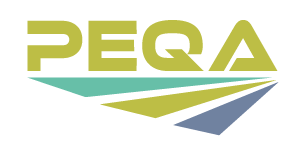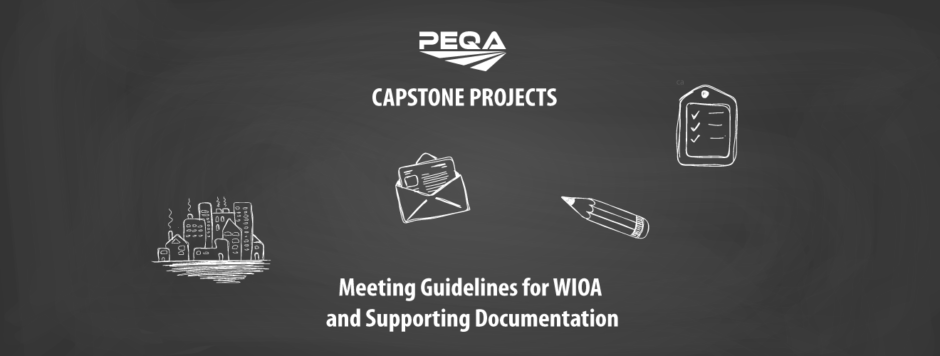Takeaways for VR Counselors & Administrators
Background
Since WIOA implementation, agencies have had an increased responsibility to collect data, train staff, and provide supporting documentation on case services. These additional changes need to be reviewed internally to identify any business process revisions, training needs, as well options for resources to assist in improvement. To meet federal common performance measures, Indiana Vocational Rehabilitation Services needs to assess the implementation of WIOA changes as well as identify any additional strategies needed to meet performance expectations.
Purpose of the Study
Goal One
Determine the challenges with implementing WIOA within the VR agency.
Goal Two
Assess effectiveness and understanding of WIOA collaboration and data requirements by field staff.
Goal Three
Determine the effectiveness of current business processes, training, and resources to collect data.
The evaluation questions were:
- What specific challenges has WIOA implementation created for field staff in performing their required functions, specifically with respect to data entry knowledge, time allocation, obtaining documentation, or impact on overall job satisfaction?
- What business processes and strategies should be updated or developed to alleviate challenges and enable staff to meet requirements?
Methods
Research Design
In order to assess these changes and challenges, a survey was created using Qualtrics. This survey contained nine questions; with either multiple choice or true/false options, with some free field text for ‘other’ responses to capture both qualitative and quantitative data.
Target Population
This survey was sent out via email to all one hundred and seventy-one vocational rehabilitation counselors working with Indiana Vocational Rehabilitation Services; including itinerant vocational rehabilitation counselors (working lead counselors) and trainee vocational rehabilitation counselors.
Data Collection Technique
The initial survey link was sent via email with a hyperlink and basic instructions on 3/11/2020; with a survey due date of 3/16/2020. A follow-up reminder was sent on 3/16/20 requesting participants to complete the survey by the end of the business day. The survey instructions were worded as follows:
Results
Goal 1: To determine the challenges with implementing WIOA within the VR agency.
- For MSGs, 32.9% had difficulty obtaining responses from participants and 32.3% had difficulty obtaining the documentation from participants to support the MSG’s.
- For credentials, with 35.6% reporting difficulty obtaining responses and 32.7% difficulty obtaining documentation.
- For obtaining employment information, 40.2% noted difficulty obtaining responses from participants, while 28.1% had difficulty obtaining documentation.
- For Follow-ups on closed cases, roughly 90% of collective responses noted difficulty contacting the participant; either being unable to contact or locate the participant despite multiple attempts (33.9%), the participants phone number or address being invalid (28.7%), and/or the participant opting not to provide the information (28.2%). The margining 5.2% noted ‘no issues’ and 3.91% used the text field to note ‘n/a or most participants not told at closure about the follow-up, making them not wanting to respond’.
- In regard to the overall WIOA changes and impact on job duties, comments were noted stating: primarily that these changes took time away from the ability to work with open active cases, was affecting the overall joy of the job, and that the number of cases requiring follow-up continues to grow.
Goal 2: To assess effectiveness and understanding of WIOA collaboration and data requirements by field staff.
- For referring participants to partnering agencies, 60% noted they felt knowledgeable on how to do this however, 53.6% felt they did not feel knowledgeable where to document this collaboration.
Goal 3: To determine the effectiveness of current business processes, training, and resources to collect data.
- In regard to feeling knowledgeable about what documentation is needed to input in the system for WIOA reporting, the largest percentage of respondents (36.3%) noted they felt knowledgeable, however, 26.6% noted difficulty with MSG, credentials, and follow-ups, 16.3% had difficulty only with MSG’s and credentials, and 11.8% had difficulty with just follow-ups after closure. Other responses accounted for 9% with respondents primarily noting difficulty remembering what documentation is needed or feeling comfortable the documentation is correct, need for more training and/or clarity, needing time to get caught up with the additional guidance, and the information being too time consuming to fill out all the screens.
Evaluation Questions
What specific challenges has WIOA implementation created for field staff in performing their required functions, specifically with respect to data entry knowledge, time allocation, obtaining documentation, or impact on overall job satisfaction?
- Overall findings indicated staff have difficulty with obtaining documentation, finding time to capture data elements, and receiving responses from participants after case closures needed for follow-up requirements.
What business processes and strategies should be updated or developed to alleviate challenges and enable staff to meet requirements.
- Strategies to aid in resolving these challenges include additional training on techniques and documentation needs, re-allocation of responsibilities to have additional staff outside of vocational rehabilitation counselors aid in duties to assist with managing time and caseloads, and future agency endeavors to reach out to partnerships and seek data exchange interfaces to obtain documentation to reduce front line administrative tasks as much as possible.
Implication for Practice or Future Research
Based on the capstone results, there are three primary areas that will be focused on improving based on the findings:
- assist in providing additional training to staff in the identified areas
- explore options to lean out the time required to complete follow-up by learning processes and allocating to a new staff role (case coordinators)
- pursue DOE and SWIS interfaces to obtain follow-up and other WIOA information to reduce burden on field staff.
Resources
- Capstone Project Summary (PDF)
- Capstone Project Poster: WORD | Powerpoint
Capstone projects
More Capstone Projects: Capstone Project Hub.

